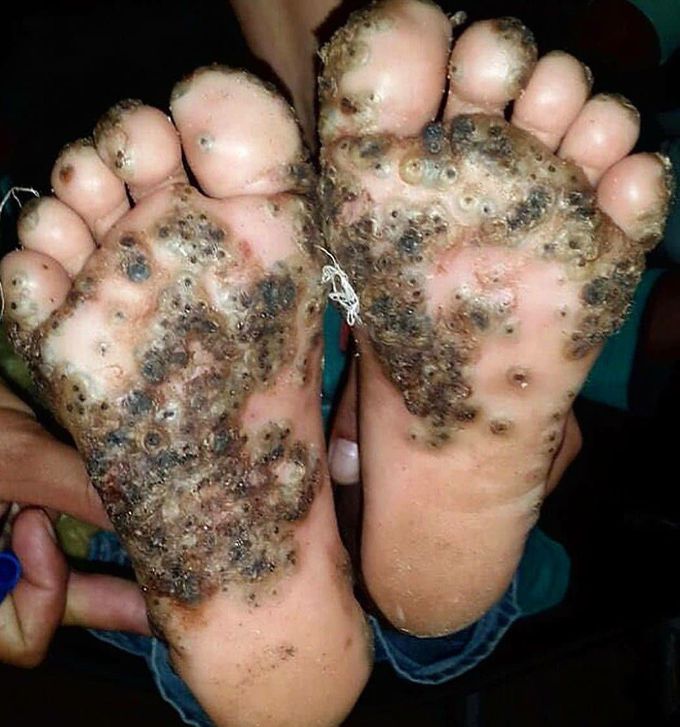


Tungiasis
Tungiasis is a skin infestation with the burrowing flea Tunga penetrans or related species. The flea has many common names including, chigoe flea, jigger, nigua, pico, sand flea, and bicho de pie (bug of the foot). The lesions caused by the flea are characterised by a white patch with a black dot in the centre. Tungiasis was first reported in the 1500s in the crewmen who sailed with Christopher Columbus. Shipwrecked on the island of Haiti, the fleas infested their skin by biting the surface before burrowing into the epidermis. They then burrow deeper into the upper dermis to feed from the blood vessels. The tunga flea is native to the West Indies and Caribbean region, but has spread to Africa, India, Pakistan, and Latin America. The fleas like the warm, dry soil and sand of beaches, stables and stock farms. The increase in travellers to endemic areas may see the disease appearing in other countries. Due to the limited jumping ability of the tunga flea the most common site of infection is the feet. The lesionforms a punctum or ulceration, and is often described as a white patch with a black dot. The flea breathes through the opening of the lesion. The lesion can range from 4-10mm in diameter. The lesions can be painful and very itchy, although in some cases there may be no symptoms. In some cases there may also be redness and swelling around the affected site. Physical removal of the flea using sterile forceps or needles. The opening needs to be enlarged and often when the flea is engorged it can be difficult to extract. In many cases the entire lesion needs to be cut out. Application of topical anti-parasitic medications such as ivermectin, metrifonate, and thiabendazole. suffocation of the flea by applying a thick wax or jelly, and locally freezing the lesion using liquid nitrogen (cryotherapy
I think that I may have trypophobia or tryptophobia or whatever it is called because this is incredibly triggering to me

